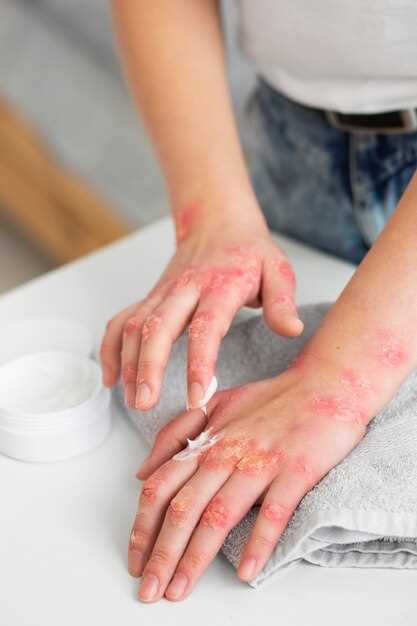
Discover a breakthrough solution to combat those uncomfortable and frustrating skin irritations that can leave you feeling self-conscious and uncomfortable. Introducing a revolutionary product that helps soothe and alleviate skin rashes, providing you with the relief you’ve been searching for.
Unleash the potential of this remarkable formula that combines cutting-edge ingredients to target and soothe skin irritations. Say goodbye to the discomfort and hello to healthier-looking skin.
Experience the proven efficacy of this dermatologist-approved formula, carefully formulated to provide relief for a wide range of skin irritations. Feel confident knowing that you have a powerful ally in your quest for smoother, calmer skin.
Empower yourself with a solution that is as gentle as it is effective. The unique blend of powerful botanical extracts and nourishing ingredients work together to promote skin health and provide relief from the discomfort caused by rashes.
Don’t let skin irritations hold you back from feeling your best. Take control of your skin’s health and reclaim your confidence with the help of Bupropion. Discover the difference it can make for you today.
About Bupropion Rashes
In this section, we will explore the causes and symptoms of an unwanted skin reaction that can potentially occur when taking a certain medication. It is essential to have a good understanding of these rashes, as well as their prevention and treatment. Let’s dive into the details.
The Dangers of Medication-Induced Skin Reactions
When using certain medications, like Bupropion, individuals may experience skin rashes, which can range from mild irritation to severe allergic reactions. This section will shed light on the potential risks and implications associated with these rashes.
Uncovering the Root Causes
Understanding what triggers these rashes is crucial. Various factors, such as individual sensitivity, medication interactions, or even underlying medical conditions, can contribute to the development of these skin reactions. By identifying the underlying causes, individuals can take necessary precautions to prevent or manage them effectively.
Genetic Predispositions: Some individuals may have inherent genetic traits that make them more susceptible to developing rashes when exposed to certain medications.
Drug Interactions: In some cases, combining medications can lead to a higher likelihood of experiencing skin reactions. Exploring potential drug interactions with Bupropion and understanding the possible risks is essential.
Underlying Medical Conditions: Certain pre-existing medical conditions, such as allergies, autoimmune disorders, or weakened immune systems, can increase the risk of developing drug-related skin rashes. Knowing about any existing medical conditions is vital for individuals taking Bupropion to better manage their skin health.
By recognizing and addressing these underlying causes, individuals can reduce the risk of developing Bupropion-induced rashes and maintain healthy skin while taking the medication.
Causes of Skin Irritations Caused by Medication
When taking certain medications, it is not uncommon for individuals to experience skin irritations. This section explores the various factors that can lead to the development of skin rashes, welts, or other adverse reactions associated with medication use, particularly in relation to Bupropion.
Allergic Reactions:
One of the primary causes of skin irritations can be attributed to allergic reactions triggered by medication. An individual may have a hypersensitivity to certain components present within Bupropion, resulting in the onset of a rash or other skin-related issues. It is important to understand that these reactions can vary from person to person, with some individuals being more susceptible than others.
Immune System Response:
The immune system plays a significant role in the occurrence of skin irritations as a response to medication. In some cases, the body’s immune system may perceive Bupropion as a foreign substance, leading to an inflammatory reaction that manifests as a rash. Therefore, the immune system’s response to the presence of Bupropion can contribute to the development of skin-related issues in certain individuals.
Chemical Interactions:
Another potential cause of skin irritations associated with Bupropion usage can be attributed to chemical interactions within the body. The unique chemical composition of Bupropion may interact with other substances present in the body, resulting in an adverse skin reaction. These interactions can be complex and vary from person to person, making it essential to monitor any changes in the skin while taking this medication.
- Inadequate Liver Function
- Metabolic Changes
- Underlying Medical Conditions
In addition to the aforementioned causes, it is important to recognize that individual characteristics and other underlying factors can contribute to the development of skin rashes or irritations in some individuals taking Bupropion. It is imperative to consult with a healthcare professional to determine the specific cause and appropriate course of action if any adverse skin reactions occur.
Symptoms of Skin Irritation
When individuals experience skin irritation as a result of taking medication, they may notice various symptoms that can vary in severity and presentation. These symptoms can manifest as redness, itchiness, or discomfort in the affected area. It is important to pay attention to these symptoms and seek appropriate treatment to alleviate the discomfort.
One of the common signs of skin irritation is the appearance of a rash. This rash may present as raised bumps, red patches, or hives on the skin. The affected area may also feel warm to the touch and may be accompanied by a stinging or burning sensation. In some cases, the rash may be localized to a specific area, while in others it may spread and cover a larger portion of the body.
In addition to the rash, individuals may experience excessive dryness or flaking of the skin. This can cause the skin to become rough and scaly, leading to further discomfort and irritation. Some individuals may also notice the development of blisters or sores on the affected area, which can be painful and may require medical attention.
It is important to note that the severity of these symptoms can vary from person to person and can depend on factors such as individual sensitivity, the dosage of the medication, and the duration of use. Some individuals may only experience mild symptoms that resolve on their own, while others may require medical intervention to manage and alleviate their symptoms.
- Redness and inflammation of the skin
- Itchiness and discomfort
- Raised bumps or hives
- Warmth and burning sensation
- Dryness and flaking of the skin
- Development of blisters or sores
If you are experiencing any of these symptoms after taking medication, it is important to consult with a healthcare professional to determine the best course of action. They can provide guidance on how to manage the symptoms and may recommend alternative treatments or adjustments to your current medication regimen.
Treating Bupropion Rashes
In this section, we will explore various approaches to address the skin reactions associated with the use of Bupropion. Understanding how to effectively manage these rashes can help individuals alleviate discomfort and enhance their overall well-being.
1. Over-the-counter remedies
Many individuals find relief from Bupropion rashes by using over-the-counter products specifically designed to soothe skin irritations. These remedies can provide temporary relief and help reduce redness and itching.
2. Prescription medications
In severe cases, a healthcare professional may prescribe topical or oral medications to treat Bupropion rashes. These medications aim to alleviate symptoms, reduce inflammation, and promote the healing process. It is crucial to follow the prescribed dosage and duration to ensure maximum effectiveness.
3. Moisturizers and soothing creams

Applying moisturizers and soothing creams to affected areas can provide relief and help prevent further irritation. Look for products containing ingredients like aloe vera, chamomile, or oatmeal, known for their soothing properties.
4. Cool compresses
Using cool compresses on the affected areas can help relieve itching and inflammation associated with Bupropion rashes. Simply soak a clean washcloth in cold water, wring out the excess, and gently apply it to the affected skin.
5. Avoiding triggers
Identifying and avoiding triggers that exacerbate Bupropion rashes can significantly improve the condition. Some common triggers include exposure to excessive heat, certain fabrics, specific skincare products, or allergens. Taking preventive measures can provide long-term relief.
6. Consultation with a healthcare professional
If Bupropion rashes persist or worsen despite home remedies, it is essential to consult with a healthcare professional. They can evaluate the severity of the condition and provide personalized advice and treatment options to address the rashes effectively.
By exploring these various approaches to treating Bupropion rashes, individuals can find strategies that work best for their specific needs. It is important to prioritize skin health and seek professional guidance when needed to ensure optimal well-being.
Preventing Bupropion Rashes

In this section, we will discuss the measures you can take to minimize the occurrence of skin reactions associated with the use of the medication. By following these guidelines, you can potentially reduce the risk of developing adverse skin reactions while taking this medication.
Understanding Triggers
One of the key steps in preventing skin rashes while taking the medication is being aware of the possible triggers. It is important to understand that every individual’s body reacts differently to medications, and what may cause a skin reaction in one person may not affect another. Identifying any potential allergies or sensitivities to certain substances beforehand can help you take necessary precautions while on the medication.
Personal Hygiene and Skincare
Maintaining good personal hygiene and skincare practices can also aid in preventing skin rashes. Regularly washing the area where the medication is applied can help remove any residue or irritants that may contribute to skin reactions. Additionally, using gentle and moisturizing skincare products can help keep your skin nourished and less prone to dryness or irritation.
| Preventive Measures | Benefits |
|---|---|
| Avoid direct sunlight for extended periods | Reduces the risk of photosensitivity reactions |
| Wear loose and breathable clothing | Minimizes friction and allows better air circulation |
| Stay properly hydrated | Helps maintain skin’s elasticity and moisture levels |
| Use mild, hypoallergenic laundry detergent | Reduces the exposure to potential irritants |
By implementing these preventive measures, you can take proactive steps to safeguard your skin and potentially reduce the risk of developing rashes while using the medication. However, it is always advisable to consult with your healthcare provider for personalized advice and guidance based on your specific medical history and needs.
